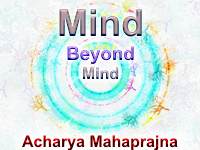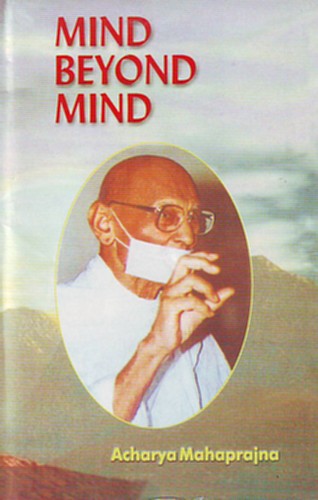
There are several strata of consciousness. The most material is that connected with the sense organs. The next is a subtle one connected with the mind. The next is still more subtle connected with the intellect. The next is still more subtle and is connected with Adhyavasaya (unconscious mind). Besides these there are several other which we have not yet been able to identify and define. We pass through all these and live through them.
The mind is a very subtle organ, and therefore, it is difficult to understand it. Dhyana is not primarily concerned with the sense organs. It is essentially a mental effort. It is not only a beneficial effort; it is also fraught with dangerous consequences. If the mind has not been trained methodically, meditation is likely to produce harmful consequences. Dhyana produces a special kind of heat in the body. The practitioner should take precaution in this connection, otherwise there is every possibility of his, becoming insane. He has to proceed very slowly and step by step. He has to exercise the greatest care. For example, an hour's meditation requires a long preparation spread over a number of days. Even a two minute long meditation is difficult to achieve; it needs a long and patient practice. In spite of such a careful preparation, the practitioner often begins to waver. Concentration of the mind even for two complete minutes is no mean achievement.
The mind, by its very nature, is fickle and restless. Innumerable currents of thoughts and ideas flow in it ceaselessly. We are generally unconscious of them. We become conscious of them only when we begin to concentrate on them. They also produce setbacks in meditation.
There are three states of the mind from the point of view of meditation:
| 1 | Avadhana | attention |
| 2 | Dharana | Concentration |
| 2 | Dhyana | meditation |
In a state of Avadhana, we attempt to focus our consciousness on a particular thought point or object and try to connect the two in order to put an end to the wanderings of the mind. When the Sergeant gives the caution 'Attention', the soldiers put an end to the wanderings of their minds and become poised to do what they are going to be ordered to do.
Avadhana sometimes has as its object the internal world also. Prajna (insight) dawns upon the mind only when we have begun to be attentive to our basic nature, i.e., the self. In such a state attention turns inward, leaving the outside world to itself. We begin to attend to ourselves. This is a special state of the mind. Insight and consciousness begin to be operative only in this state.
The next state is that of Dharana (concentration). It implies the concentration of all the faculties of the mind on any object or part of the body. This state succeeds that of Avadhana and precedes that of Dhyana proper. Patanjali has defined it as a state in which the mind is tied to a particular area. A continued fixing of the mind on a particular object is a state of meditation.
As explained above, Avadhana is the first stage of meditation and the mind has got to be trained for it. Ordinarily it consists of fleeting states. Activity is, however, not the natural characteristic of the mind. It is easy to flow with the currents of the mind. There is no difficulty in doing so. The practitioner, on the other hand, has to swim against the current. Mahavira said, 'The whole world swims with the current. It is very difficult to swim against the current. To swim with the current is Samsara which means absence of peace and the experience of misery.' Swimming against the current means peace and stability. One who is capable of doing so can cross the river of Samsara.
Meditation means transplanting the mind into its natural state by withdrawing it from its unnatural state of restlessness and activity. It is a difficult attempt no doubt. There should be no misunderstanding on this point. I should like to warn you against the dangers involved in it. We should not deceive ourselves. Meditation is an implement of making the unconscious conscious or in other words, of awakening consciousness by removing the shadow of the unconscious from it. The purpose of meditation is to obliterate Pramada (self-negligence). That is why we have to be very careful, lest meditation should lapse into a state of trance. It is a long and continuous process and needs a lot of preparation and patience.
The practice of reciting Mantras is a similar process. The practitioner has to be on his guard. He has to put on a Kavaca (armour) so that he may make himself immune. Every limb of his body has got to be seasoned. An unguarded practitioner of Mantras invites dangers. Soldiers in ancient times used to put on armour to guard themselves against the strokes of the enemy. The practitioner also has to do so. Of course, the Kavaca he puts on is of a different kind. The purpose is to put a stop to all kinds of external influences.
Meditation needs a long preparation. Seasoning the body is a prerequisite of meditation. Another prerequisite is the collection of the mind. This is called Avadhana. That is why I am discussing it at length. You have to train and season the mind so that it may become capable of entering into a state of Samadhi (ecstasy). Avadhana develops the propensities of the mind. You have to develop mental skills also. Asanas aim at seasoning the body and keeping the spinal cord supple without which you can not turn the body this way or that way.
The mind grasps external objects. We come across a process of mental training in the Nandi Sutra. The first step is the Alpagrahi step. In this step the mind catches hold of a single thought point or object. In the beginning the practitioner should concentrate on a small object and that too for a very short time. The second step is called the Bahugrahi step. This consists in widening the scope of concentration and of making its duration longer.
One of the objects of Preksha meditation is one's own body or breath. The instructor gives a caution and the practitioner is asked to feel the breath on the end point of his nose. Beginning with this, he has to watch the process of inhaling and exhaling from the depths of his body to the tip of the nose. He has to behave like a sentry at the gate of an establishment watching those who enter and those who come out. He should be attentive like the sentry. He should watch his breath attentively.
The next step is that of Bahugrahi. A caution is given to the practitioner, 'carry your mind inwards with the inhaling of breath; carry your mind outwards with the exhaling of breath'. This is Avadhana on a wider scale. In the Alpagrahi step, the tip of the nose was the point of concentration. In the Bahugrahi stage it is the entire process of inhaling and exhaling which is the object of concentration. The extended field of watching begins at the navel and ends at the lungs. The mind has to encompass this whole field.
The Alpagrahi and the Bahugrahi steps constitute a single unit of concentration. The next unit is comprised of Ekavidhaqrahi and Bahuvidhagrahi. The former means to see and concentrate on a single class of objects and the latter means to see and concentrate on several classes of objects. Watching and feeling the touch of breath vibrations on the tip of the nose is one kind of Avadhana. This means concentrating the mind on one point in the midst of a gamut of vibrations and waves in the body. Bahuvidhagrahi means watching and feeling more than one point and grasping them.
Avadhana requires a prior mental training. This training develops the capacity of concentrating on and grasping several objects simultaneously. Upadhyaya Yasovijaya was a master of Avadhana. He was a man of erudition and an outstanding logician. A hundred brass cups were placed before him and they were struck with a rod one by one. The Upadhyaya watched the sound waves produced by each stroke. Then came the test. A particular cup was struck and he was asked to tell which cup had been struck. He immediately told which cup had been struck. This is an exhibition of the skill in grasping sound waves. It is an extremely delicate skill.
Several monks and nuns of the Terapantha sect practice an Avadhana known as the Sapta Sandhana. This is a feat of grasping several objects simultaneously or instantaneously with the help of several sense organs. This is an example of Bahuvidhagrahi. These are processes or training the mind. They are the exhibition of the immense powers of the mind. Every human mind possesses such powers. It is practice, which makes these powers operative. People feel them to be magical powers. But it is not so. These skills can be developed by training and there is nothing mysterious about them.
The third unit consists of Kshipragrahi and Ciragrahi. The former consists in grasping an object by an intuitional flash. The practitioner casts a single glance on a room, for example, and grasps every item it contains in an instant and then closes his eyes. He can then describe every detail of the room, the colour of the walls, the furniture etc. without any difficulty.
We are not fully conversant with the powers of the mind. We know very little about them. If we knew them, we would be able to achieve tremendous spiritual development. The second skill is that of Ciragrahi. It means a grasping power which works not instantaneously but slowly. It takes a long time.
The fourth unit is composed of Anisritgrahi and Nisritagrahi. In the first the practitioner grasps a whole situation or a whole group of objects by casting a glance at one of its items. Let me illustrate this by narrating an incident. A certain painter once happened to pay a visit to the court of a king. He accidentally saw the toe of the queen who was otherwise completely veiled. By casting a single glance on the toe, the painter could visualise the entire personality of the queen and painted her portrait, which also included a wart on a secret part of her body. On seeing the portrait the king became suspicious. He became convinced that the queen was a bad character, otherwise, he thought, how could the painter locate the wart. He became so much enraged that he pronounced the punishment of death on the painter. The minister of the king, however, intervened and persuaded the king to test the skill of the painter. A test was given and the painter succeeded. He was eventually exonerated by the king.
I have discussed a tow of the practices of Avadhana, which is a means of developing the powers of the mind. I have also tried to emphasise that these powers can be developed by practice I have also pointed out that Avadhana is not meditation. The latter is much more than the former. You can very well imagine that if Avadhana can develop the power of the mind to such an extent, how much more will Dhyana be able to accomplish. The first step in meditation is Avadhana. The second step is concentration.
 Acharya Mahaprajna
Acharya Mahaprajna

